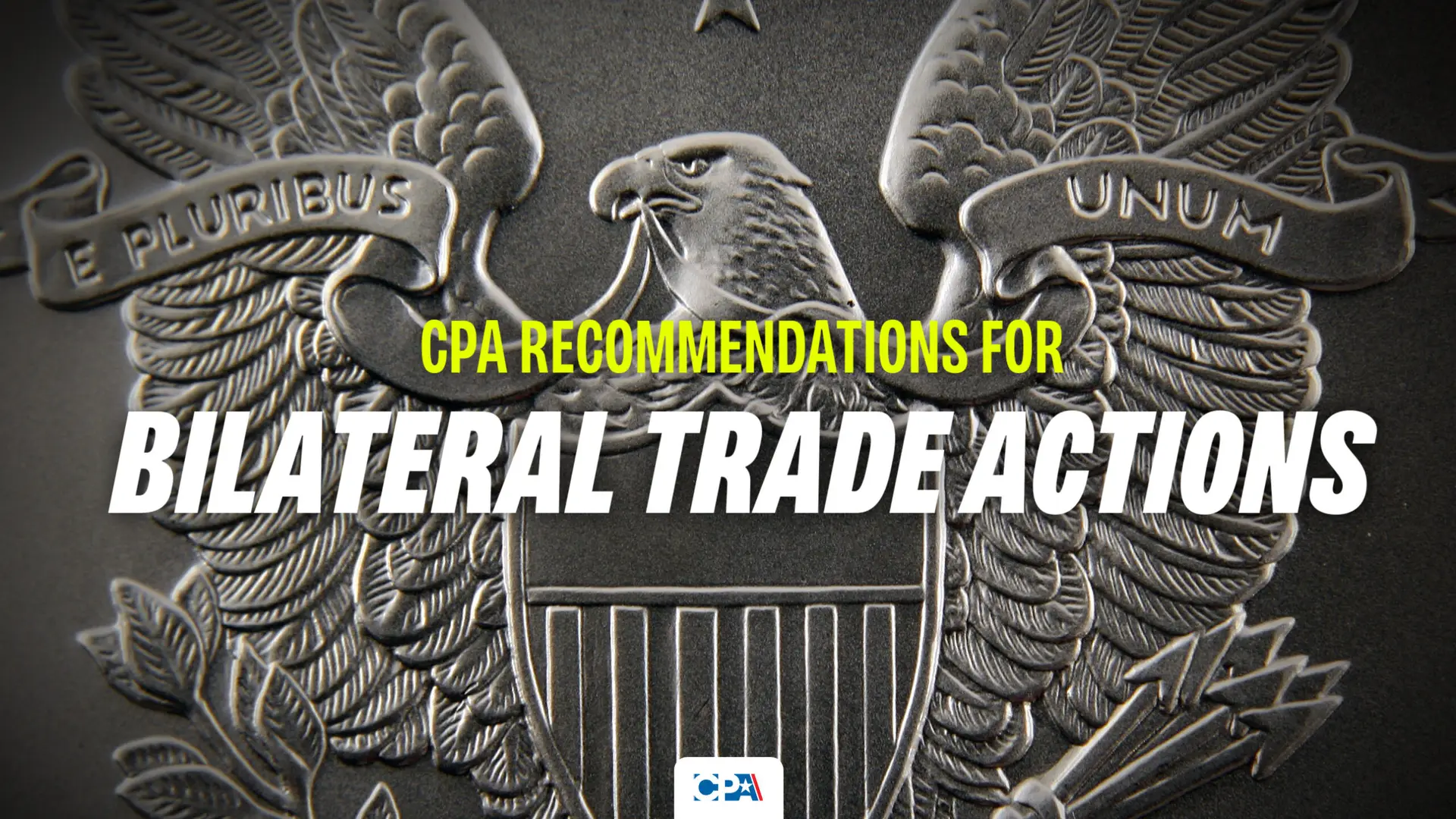The Coalition for a Prosperous America submitted a nine-page letter to the USTR in response to a request for comment on a worker-centered trade policy.
The USTR, under Katherine Tai’s leadership, has continued with much of the trade policies of Robert Lighthizer and has used the argument of worker-centric trade to move cautiously on trade agreements. The USTR asked for written comments from the public this summer for thoughts on how trade and investment policy may be designed to expand the benefits of trade to underserved communities and with trading partners who share concerns about rising inequality.
In the notice for written responses, the USTR posted a series of questions and CPA responded to two of them:
Are there trade policies, provisions, or actions that are detrimental to advancing racial and gender equity, equality, and economic empowerment? If so, please specify the relevant policy, program, and/or provision, and if available, provide data or analysis that would be useful evidence of this detrimental effect.
And, do you have a recommendation for how this should be corrected?
CPA used our own research on this issue, coupled with deep dives already done by the International Trade Commission in two reports over the last two years, and at least three articles and working papers that shattered the perception that free was a tide lifting all boats.The conclusions reached by the ITC, and others, are corroborated by CPAs “job quality index” developed in partnership with Cornell academics in 2019.
CPA’s Job Quality Index reveals that Black Americans and Hispanic Americans suffer from far worse job quality than the total workforce, as measured by the weekly wages of all U.S. production and nonsupervisory employees. These disparities are due to the decline of high-quality jobs such as those in the manufacturing sector and the rise of low quality, i.e. low-wage, low-hour jobs in many low-paid service sectors of the economy.
For solutions, CPA offered the USTR the following considerations:
Remove China’s Most Favored Nation Status
This gives China nearly duty-free access to the U.S., with the exception of about half of the goods it exports here that are now faced with either solar safeguard tariffs, steel and aluminum tariffs, or the large Section 301 tariffs.
In a recent study by CPA economist Andrew Heritage, the ever-growing trade deficit with China accounts for nearly half (47.9%) of U.S. manufacturing job losses since 2001 when China entered the World Trade Organization. That’s when they were granted Most Favored Nation (MFN) status.
China’s MFN status should be repealed so China is subject to our Column 2 tariffs. There should be a three to five year tariff phase-in period to enable a reasonable time period for necessary adjustments by industry. Our research has determined that further decoupling from China would grow the U.S. economy, increase household incomes, create more jobs, and rebuild many critical manufacturing sectors. The removal of MFN (most favored nation) status for China would increase the tariff rate on imports from China from the current Column 1 rate, which is often zero or near-zero, to the Column 2 rate, equivalent to an average tariff rate of 39.9%.
Rethink Trade Models
The standard Global Trade Analysis Project (GTAP) model has frequently been used to evaluate the economic impact of trade policy proposals, despite the fact that its forecasts have been found to have zero correlation to what actually happens thereafter. CPA improved the standard GTAP model by analyzing the real-world results of recent tariff increases and learning from the economic literature to show pro-growth effects of trade and industrial strategy tools such as tariffs.
The CPA economic team introduced productivity elasticities to the model that allow domestic producers to increase output and leverage the opportunity that a tariff provides. We also introduced factor elasticities that allow firms to respond to an increase in demand by increasing their capital investment and increasing employment. Firms respond to the increased economic activity by expanding capital investment and hiring more workers, which further amplifies the effect of the tariffs.analysis as evidence of the detrimental effect.
Ending ‘De Minimis’ – The Global Free Trade Deal
De minimis is a provision in U.S. trade law that allows for duty-free imports if the goods are priced at under $800. Given the proliferation of e-commerce, where the world is your shopping mall, the U.S. consumer effectively has duty-free access to markets worldwide to import tax-free everything from $700 vacuum cleaners made in Germany, to bed linens made in India. Chinese retailers Shein and Temu have grown thanks to de minimis.
There are many ways to tackle this issue. Three bills in Congress seek to just remove China from it.
The Administration should exercise its authority to restore the de minimis threshold amount to historical, truly “de minimis” levels. It should also reverse the 1994 regulatory change that allows custom couriers to effectively be importers because they have no training or financial liability for assisting the unlawful importation of goods. The Administration should subject custom couriers to the one package per day limitation of all “importers”.
Using Tariffs as a Key Industrialization Tool
CPA believes that tariffs work, especially when used in harmony with policies like tax incentives for domestic production.
The deleterious effects of job losses stemming from reduction and elimination of tariffs have been well documented already by the ITC. Recent CPA research couches these effects more in the nature of a lost opportunity – for the economic growth and job creation that can result from the use of tariffs as a trade policy tool. This benefits blue-collar labor as manufacturing is given a chance to compete against countries with incomparable environmental rules, lower labor costs, and undervalued currencies.
CPA did two studies, one that modeled a 35% tariff globally, and another that modeled a 10% tariff. We shared that with the USTR.
Tariffs should be fully utilized as a tool for accomplishing the goals of trade policy discussed below. Quotas should also be considered to preserve and increase market share in US industries. We should have a goal of balanced trade and achieving a 20% manufacturing share of GDP.
CPA chief executive Michael Stumo signed the letter.
In conclusion, he wrote that CPA recommends that USTR consider the overarching goal of the United States with its trade partners and allies should be “to maintain overall balanced trade.”
The U.S. has the most imbalanced trade with China, Japan, and the EU.
“Relationships that run a chronic deficit in favor of the other nation strain the use of the term partner,” Stumo wrote. “Geopolitical and national security considerations are undermined when the relationship results in the offshoring of jobs and industries that are critical to U.S. economic, health, and military security.”












